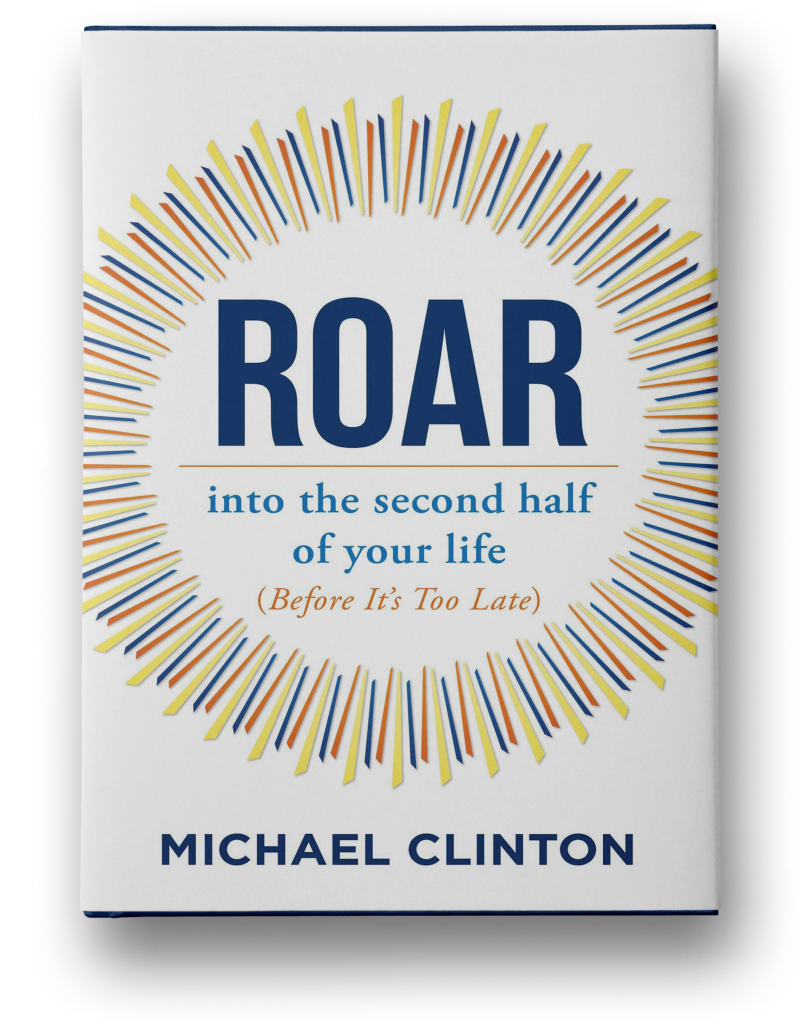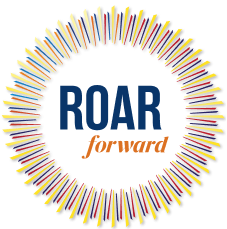At 87, re-imagineer Masako Wakamiya crushed social norms by becoming the world’s most senior app developer. She did not buy into ageist notions about what an 87-year-old could or could not do. Instead, she took an age-agnostic approach, not letting a number define her capabilities or what is possible. This mindset paved the way for her to achieve this professional goal in her late 80s.
At every age, we have the power and potential to live a life where we truly thrive. But the language we use and the mindsets we hold—even subconsciously—can prevent us from living and leading with purpose and passion.
It’s time to ask yourself: are myths about aging and decline holding me back from success? If you provide products, services, or experiences for adults midlife and older, are you identifying your own unconscious biases to recognize what is needed for your company to succeed?
When the U.S. was founded, life expectancy hovered around 40, and those “gray hairs” were considered sages. Appearing older was popular, and donning a white wig was the day’s fashion. Boomers, born beginning in 1946, eventually abandoned this veneration of elders in response to the cultural shift created to meet the demands of this baby boom. Schools were built, disposable diapers were invented, and our cultural preoccupation with youth was born. By the 1960s, the so-called midlife crisis entered our lexicon and evolved into the piercing ageist arrows we experience today. Ageist tropes are as insidious as they are intersectional. We are often told–and even tell ourselves–that we are too old to be powerful, to change, to grow, and to thrive. Quite frankly, the opposite is true.
The truth is that adults midlife and older (or midlife and better, as I like to say), are driving our economy and are looking for more–not less–from life. They hold most of the wealth in the U.S., contributing $8.3 trillion to the economy annually and accounting for 56% of consumer spending. They use their experience to start more entrepreneurial businesses than their younger counterparts. They report growing happier around the 50-year mark. Understanding these facts and cultivating an age-positive mindset has been shown to contribute up to 7.5 years to life expectancy.
Whether you are leading your company, family, or community—or all these groups simultaneously—the one consistent element is you. As a gerontologist, coach, and longevity advocate who translates ancient wisdom and modern science from research to practice, I’ve distilled five key aspects of successfully living–and leading–in the longevity economy.
- Live by Stage, Not Age
Although many of us are familiar with the demographic trends showing that we’ve added decades to life expectancy over the last century, few recognize the pervasive unconscious bias associating those additional decades with decline. Our thinking is stuck in the previous century when we followed a consistent life script: learn, earn, and retire.
We are experiencing a cultural lag, a dissonance between societal perceptions and the current reality of many people over 50. For example, when my husband and I were in our early fifties, we craved an adventure to take us out of our comfort zone and allow room for growth. We determined that gap years shouldn’t be reserved only for the youth, so we picked up and moved to Italy for a year–an experience that forever changed our perspective on what’s possible at any age. When we returned, I was inspired to write the book The Middlescence Manifesto.
What could be possible in your life if you shifted your mindset away from a number?
- Middlescence: Midlife Redefined
Before leaving for Italy, I felt I was at a crossroads, in many ways akin to adolescence. I no longer felt young, but I certainly didn’t feel old. Our children were out of the house, many relationships were shifting; it was time to shake up some of the choices we made at an earlier stage of life.
I realized we now live long enough to experience a kind of adolescence more than once in our lives. I refer to it as “middlescence,” a term that has become popular in the longevity space. Midlife has long been considered a relatively uneventful slog toward our declining years. One of my former clients expressed it as, “When you reach a certain age, there is an unwritten sticky commitment to conformity that cements you in place.” As our knowledge about health across our lifespan has deepened, the decades in middle life are finally being recognized as powerful years of possibility.
What if we anticipated midlife as a time to revisit earlier choices and create a roadmap for healthy, joyful, engaged years ahead?
- Stop Retiring From, Start Aspiring To
The new rules of longevity call for retiring the word “retirement.” The word “retire” is passive; it means to withdraw, to enter seclusion, which is limiting and imbued with connotations of decline, boredom, and a life based mostly on leisure without the sense of purpose we all crave.
It’s time to shift to language that encourages people to “aspire to” rather than “retire from.” A better word is preferment: a self-designed stage of life that is not age-mandated. Preferment, unlike retirement, identifies a life stage focused on choosing a constellation of activities one prefers, living in alignment with one’s values, and embracing potential at any age. Preferment invites a change towards engaging in activities, causes, and relationships based on purpose, meaning, joy, and impact, whether or not this includes salaried work. Shifting your mindset and goals to reflect something aspirational will give you greater energy, freedom, and a sense of purpose.
What would you change to curate a life designed around activities, causes and relationships based on your greatest sense of purpose, meaning, joy and impact?
- Find Connection in a Disconnected World
In 2017, U.S. Surgeon General Vivek Murthy declared loneliness a public health epidemic. His book outlined the clinical disconnection that suffocates too many of us and those we care about. The role of meaningful connections has become pivotal in any conversation related to cultivating a healthy and successful life course. Due to the challenges in creating and maintaining friendships in the digital age, too many of us are missing the joy that comes with experiencing new adventures, interesting conversations, or simply spending time with others.
At every stage and age throughout our lives, meaningful connection (or lack thereof) shapes us. Sociologist Émile Durkheim coined collective effervescence to describe the harmonic energy of people coming together with a shared purpose, where we find a sense of happiness, even bliss, in those moments. In the future, communities will continue to be more centered around connection and multigenerational living. Companies, too, will recognize that diverse, multigenerational relationships result in a more robust bottom line.
What types of relationships energize you, and how can you invest more in those relationships?
- Lifestyle IS Medicine
If you are like me, your goal is not simply to live longer but to live longer while thriving. In other words, the goal is to match your health span (the years you remain independent, impactful, and joyful) to your lifespan.
It has been estimated that over 60% of chronic illnesses are related to lifestyle choices. Leaders of companies focused on the longevity economy should ask themselves, “How can we provide products and services that cultivate well-being, equanimity, and endurance for the game of life?”
The answer lies in the profound truth of Lao Tzu’s quote: “A journey of a thousand miles begins with a single step.” With each step taken, our daily choices inform the quantity and quality of the years we have left on Earth. Ancient wisdom and modern science recognize that lifestyle IS our best medicine. This concept is being integrated into the medical profession, as noted by the American College of Lifestyle Medicine, a society of healthcare professionals united to reverse chronic disease. Stanford University’s Lifestyle Medicine program, where I am an advisor, goes a step further, focusing on helping people experience healthy aging and optimal performance before there is an illness to address.
The most authentically successful amongst us know that how we measure success is more of an internal yardstick (living aligned with our values and purpose) than an external one (such as a fancy job title or winning someone’s approval). We have the freedom to design what success means to us as individuals, families, communities, and beyond. Breaking free of the language, myths, and mindsets that cause us to associate aging with decline primes our minds to anticipate the joys and possibilities ahead. With the age-agnostic mindset, we can welcome the challenges and benefits of growing older and embrace our new collective future in a thriving longevity economy.
The quintessential question to ask yourself is: How do you become your best self for the longest time possible–for what matters most?
Barbara Waxman, the founder of The Odyssey Group, is a highly sought-after longevity and leadership advisor, coach, speaker, and author. Barbara translates cutting-edge research and collective wisdom in ways that enable others to understand how the dynamics of our aging world impact individuals, communities, companies, and the planet. Barbara’s leadership as a gerontologist in the coaching field has culminated in the transformative coaching model Entrepreneurship Turned Inward™️ (ETI), the evidence based Seven Lifestyle Levers Assessment™️ and the Longevity Roadmap™️. Barbara is an Advisor to the Stanford Center on Longevity, Stanford Lifestyle Medicine, and is a faculty member at Chip Conley’s Modern Elder Academy.
Website: barbarawaxman.com
LinkedIn: linkedin.com/in/barbarawaxman/

